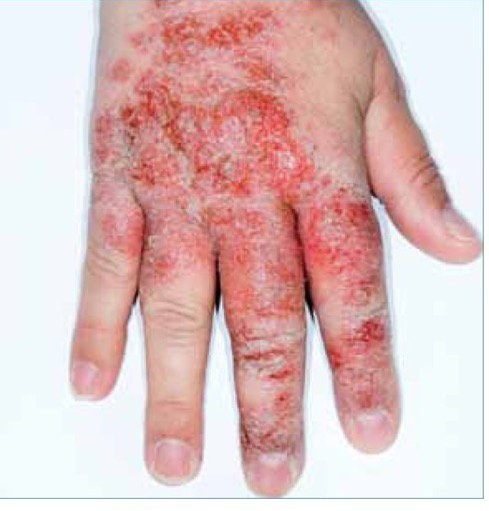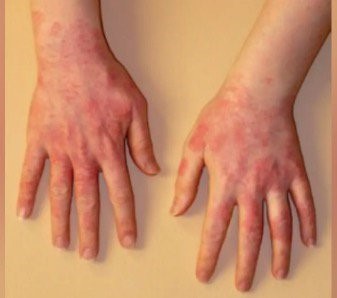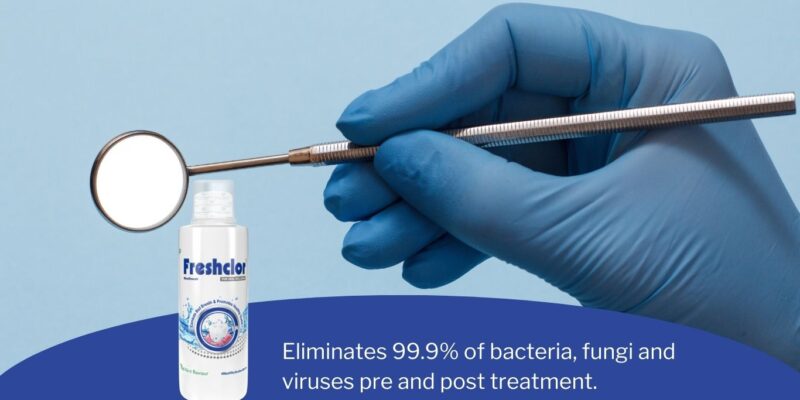In the world of dentistry, where hygiene and protection are paramount, the use of gloves stands as a fundamental practice. However, an often overlooked challenge faced by some dental professionals is glove allergy. This condition not only affects the comfort and health of the dentists themselves but also poses potential implications for their practice and patient care. Understanding the nature of glove allergies, exploring alternative solutions, and adopting best practices for managing this condition are essential steps in addressing this issue effectively.
 Why Do Glove Allergies Happen?
Why Do Glove Allergies Happen?
Glove allergies in dentists can manifest due to sensitivities to latex or chemicals used in glove manufacturing, such as accelerators. Residual proteins from natural rubber latex (NRL) can sensitize dental professionals who wear NRL gloves, resulting in Type I NRL protein allergy.
Symptoms can range from mild skin irritations to severe allergic reactions, including dermatitis, hives, and in rare cases, anaphylaxis. The prevalence of latex allergies has led to increased use of non-latex gloves; however, chemical accelerators in nitrile and other synthetic gloves can still cause allergic reactions.
Latex Allergies – Type I hypersensitivity
Latex gloves have historically been favored in medical settings for their durability and flexibility. However, natural rubber latex contains proteins that can trigger allergies, namely type I [immediate] hypersensitivity mediated by immunoglobulin E. Continuous exposure may heighten sensitivity and exacerbate symptoms.
Chemical Accelerators – Type IV hypersensitivity
Chemical accelerators which are non-latex contact allergens in dentistry, such as glutaraldehyde, methacrylates, and the rubber-processing chemicals found in gloves (e.g., thiurams, carbamates) are used to speed up the vulcanization process in non-latex gloves. These chemicals can lead to Type IV hypersensitivity reactions, resulting in allergic contact dermatitis.
Symptoms
Symptoms of latex allergy include:
- Skin reactions like itching, redness, rash or hives
- Itchy nose, throat or eyes
- Nausea, abdominal cramps
- Difficulty breathing, including a runny nose, sneezing, coughing or wheezing
While most reactions occur within minutes of exposure, some skin reactions may not develop for 24-48 hours afterward.
Anaphylactic shock, which could be life-threatening, can also occur. This systemic reaction can cause a drop in blood pressure, difficulty breathing, and swelling of the throat, tongue and nose.
 Risk Factors for Developing Glove Allergy
Risk Factors for Developing Glove Allergy
Food Allergies: People who are allergic to certain foods, including
- apples
- avocados
- bananas
- carrots
- celery
- chestnuts
- kiwi
- melons
- papaya
- raw potato and/or
- tomatoes are at an increased risk of latex allergy.
Conversely, people with latex allergy may also be allergic to these foods.
Dust allergies:People who are sensitive to other allergens, like mold and pollen, may be allergic to latex as well.
Immunocompromise: Individuals who have had multiple surgeries also may be at increased risk of latex allergy.
Items in the Dental Clinic That May Contain Latex
It is essential to remember that gloves are not the only latex containing item in the dental setup. IF you are allergic to gloves, there maybe a list of items you should be careful with while handling them. Here are some items in the dental clinic that may contain latex:
- Gloves
- Local anaesthetic cartridges and emergency drugs/syringes
- Rubber dam, widgets, etc
- Endodontic stop
- Orthodontic elastics, separators, headgear
- Prophylaxis cups
- Facemasks, airway tubing, oxygen-giving tubing
Alternative Solutions
For dentists suffering from glove allergies, several alternatives can help mitigate adverse reactions while ensuring safety and hygiene during dental procedures.
Non-Latex Gloves
Switching to non-latex options like nitrile or vinyl gloves can be a starting point for those with latex allergies. While not as elastic as latex gloves, they provide adequate protection for most dental procedures.
Accelerator-Free Gloves
Manufacturers have developed accelerator-free gloves to address chemical sensitivities. These gloves eliminate common accelerators from the production process, reducing the risk of allergic contact dermatitis.
Proper Glove Selection
Choosing the right size and changing gloves frequently can reduce skin irritation caused by prolonged wear. Additionally, using powder-free gloves minimizes exposure to aerosolized proteins or chemicals that could trigger respiratory symptoms.
Best Practices for Managing Glove Allergies
Dentists with glove allergies should adopt comprehensive strategies to manage their condition effectively:
- Regular Screening: Regular screening for latex and chemical sensitivities helps identify allergies early on.
- Barrier Creams: Applying barrier creams before wearing gloves can protect the skin from direct contact with allergens. However, oil-based hand lotions can cause gloves to deteriorate and solubilize latex proteins, increasing the risk of allergic skin response. Seek a dermatologists’s opinion for the same.
- Education: Staying informed about new materials and technologies in glove manufacturing assists dentists in making informed choices.
- Consultation with Specialists: Consulting with allergists or dermatologists provides personalized advice on managing glove allergies effectively.
Prevention of Glove Allergies
- Good hand care is essential, as a compromised skin barrier like cuts or bruises will increase the chance of developing both irritant dermatitis and allergic reactions.
- Do not wear jewellery, keep nails short and do not wear false nails or nail extensions.
- Wash hands frequently using tepid water, rinse well, and pat dry with paper towels before donning gloves.
- Prolonged and unnecessary wearing of gloves should be avoided.
- At the end of the session, hands should be washed to remove traces of latex, and an aqueous-based hand cream used.
- Good hand care should also be practised away from work.
- Using low-protein, powder-free, single-use latex gloves in the workplace is unlikely to lead to new cases of latex allergy.
Conclusion
Glove allergies present a significant challenge for some dentists but recognizing symptoms early on allows affected individuals to take proactive measures towards managing their condition better. Exploring alternative materials such as non-latex or accelerator-free options alongside implementing best practices like regular screenings and protective barrier creams ensures that dentists can continue providing quality care without compromising their health or comfort. With increased awareness of this issue within the dental community, it is possible to create a safer working environment for all dental professionals regardless of their sensitivities or allergies.




















Comments